March 14, 2021 Auroras
Pughole and Wabana Lakes
I did not expect to see this. Solar wind was pretty faster (nearly 600 km/s), and the solar wind magnetic field component Bz was south (-5 nT). I thought it would be good for seeing a few auroras this evening, and since conditions were pretty good early in the evening, I decided just to shoot a few stills and go home. Honestly, I wasn't too interested in going out at all because I was tired from last night.
When I'm making ny way north out of town, I usually roll down the window when I'm driving by McKinney Lake to see if I can see an auroral arc. If I don't see it, that doesn't mean I turn around and head back home, but if I do, and it looks really strong, I get a bigger sense of urgency, and I might choose to stop someplace closer than where I had initially planned to go.
This time, I looked and saw that there was indeed something there, but it wasn't too bright. I could continue to my original destination. However, about halfway up Highway 38 to my turning point, I could see a much brighter arc in front of me. It looked like it would erupt in structure pretty soon. I decided to get to the nearest boat landing and start shooting right away.
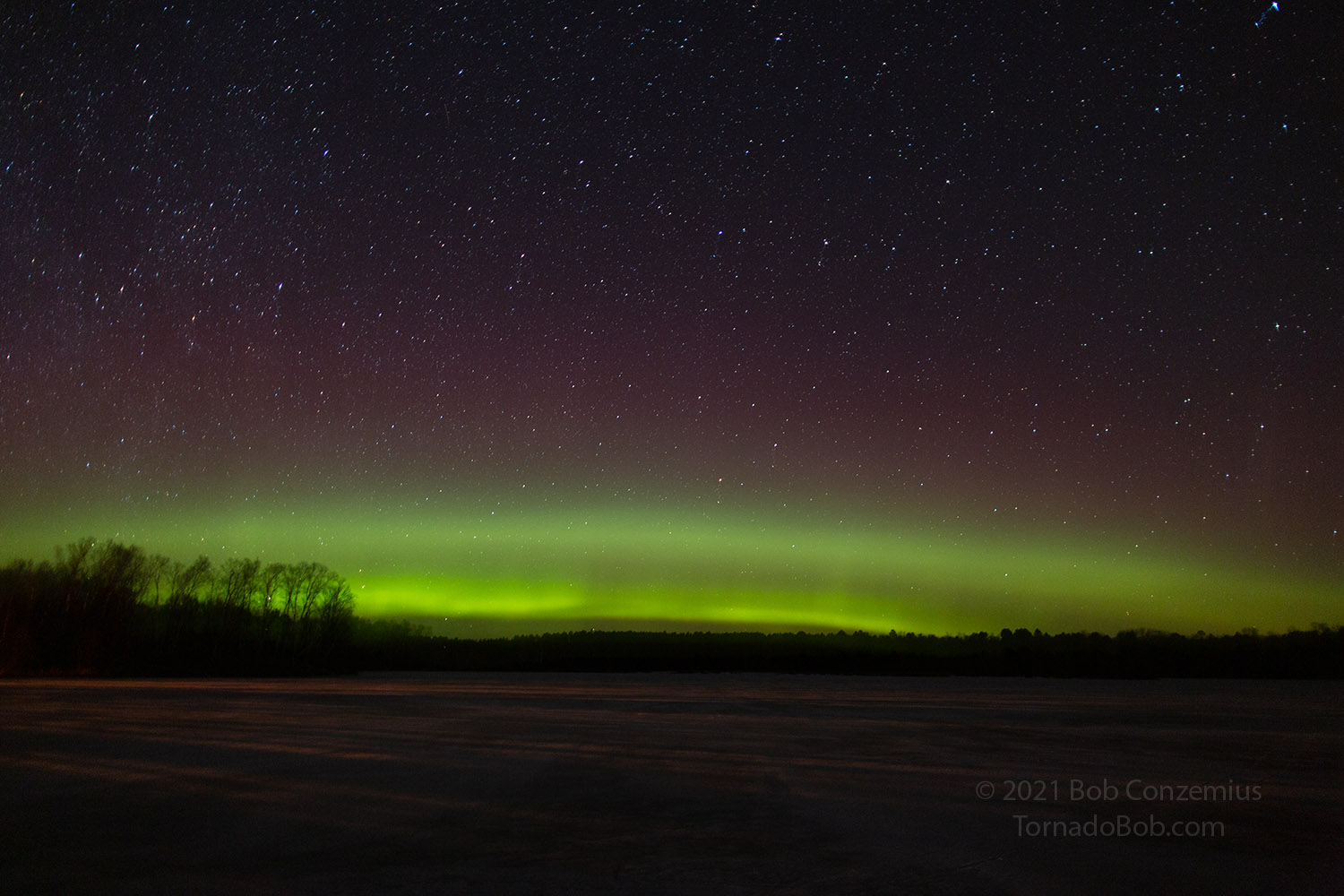 |
| The first shot revealed a substorm about to start. The yard light shines on the lake a bit brighter than this when there's snow. |
The substorm started almost immediately. The part of the lake nearest the boat landing is partially illuminated by a residential yard light, so I ran north with my tripod and camera to get north of there (it's a couple hundred yards of flat running, but the ice can be slippery). Most of the next 15 minutes was spent figuring out which way to shoot. I considered running north to the islands, but they weather had been warm, so I was unsure if the south-facing shoreline still had safe ice. I looked west and wanted to capture some of the zodiacal light that is prevalent after sunset this time of year. Meanwhile, the substorm was unfolding to my north. I set up a camera and let it shoot, then ran back to my car and grabbed the other camera. I set it up closer to the landing and let it take a few shots on its own.
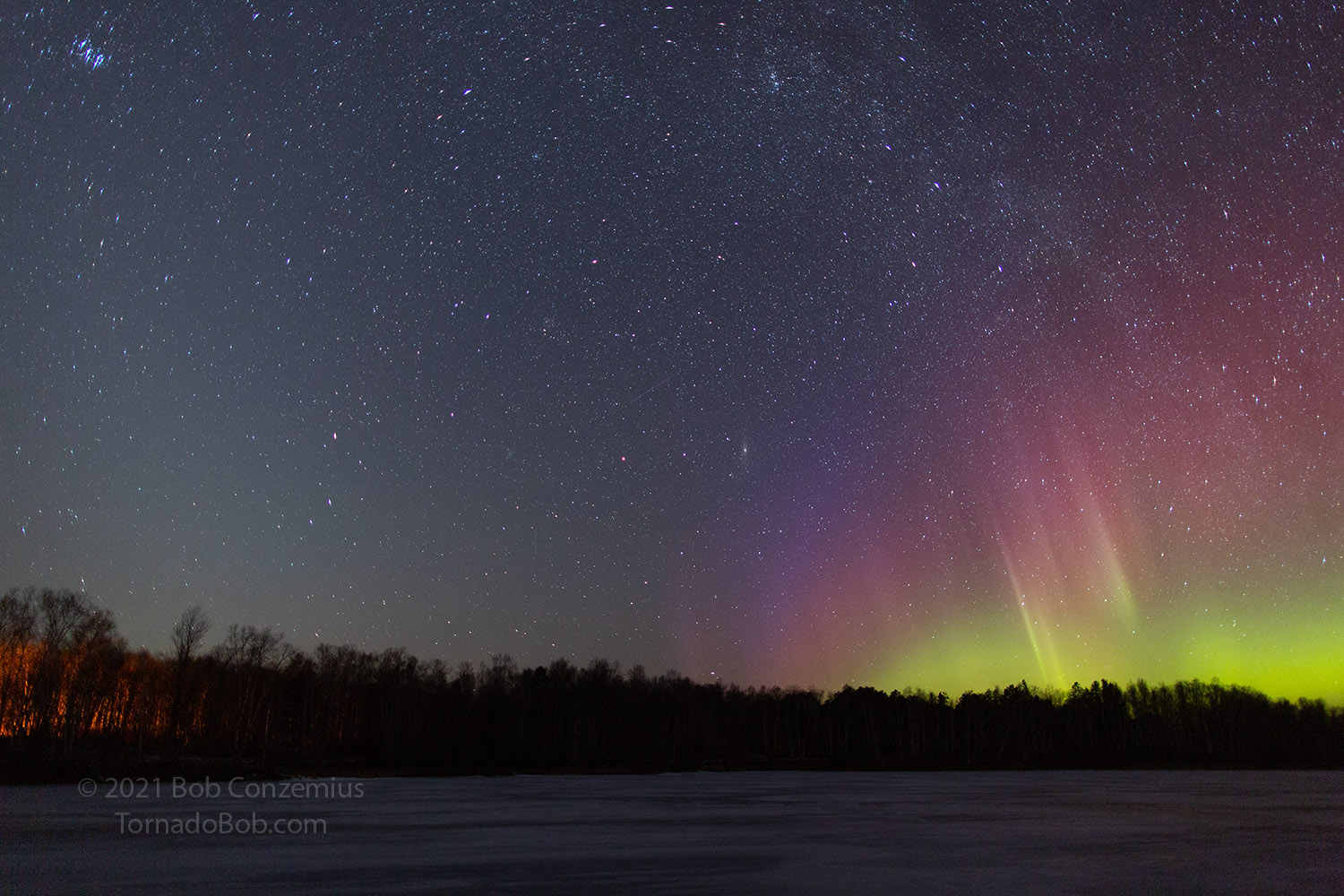 |
| The auroras started to dance right away. Meanwhile, the zodial light was visible (far left side of the image). |
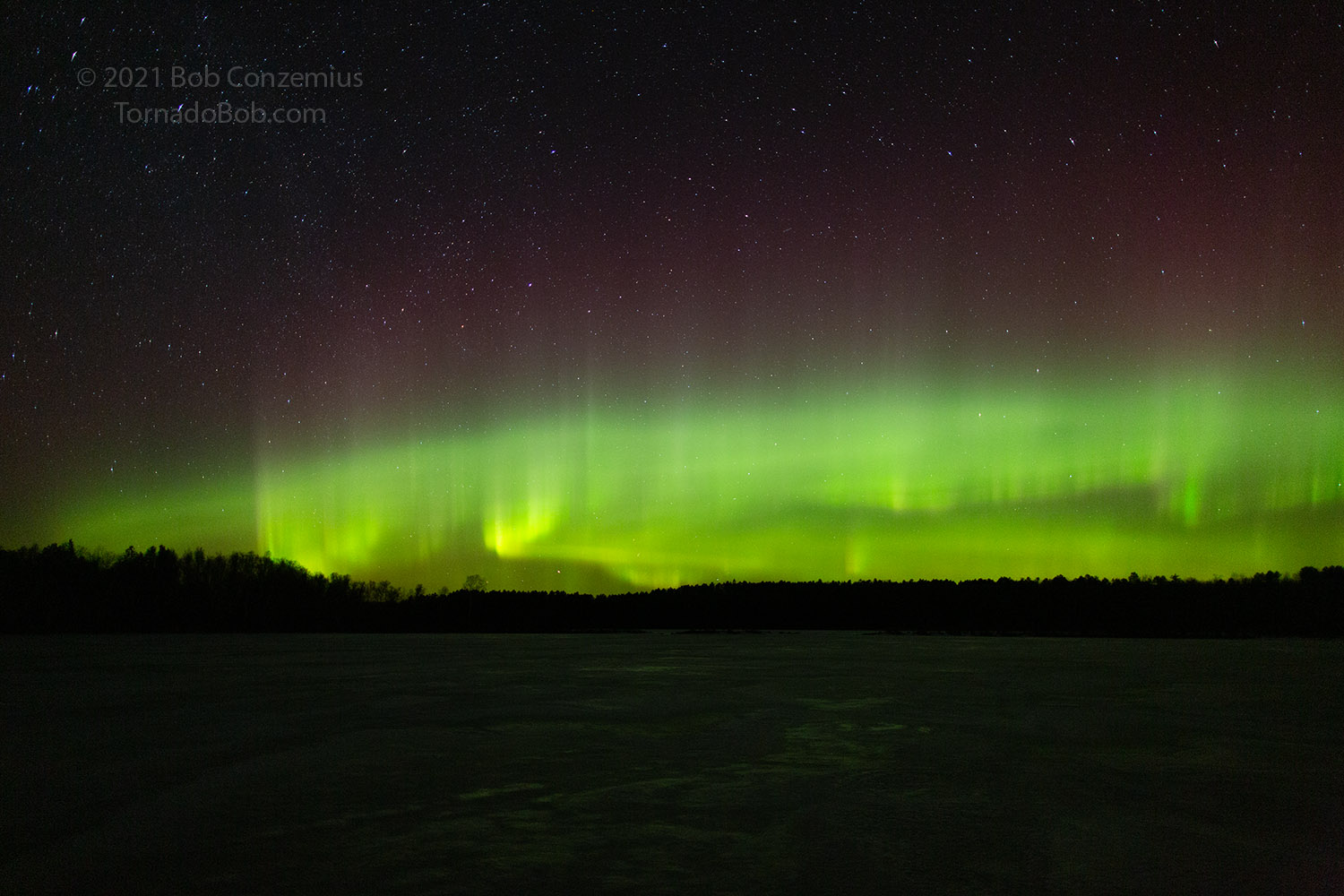 |
| The auroras started to dance right away. |
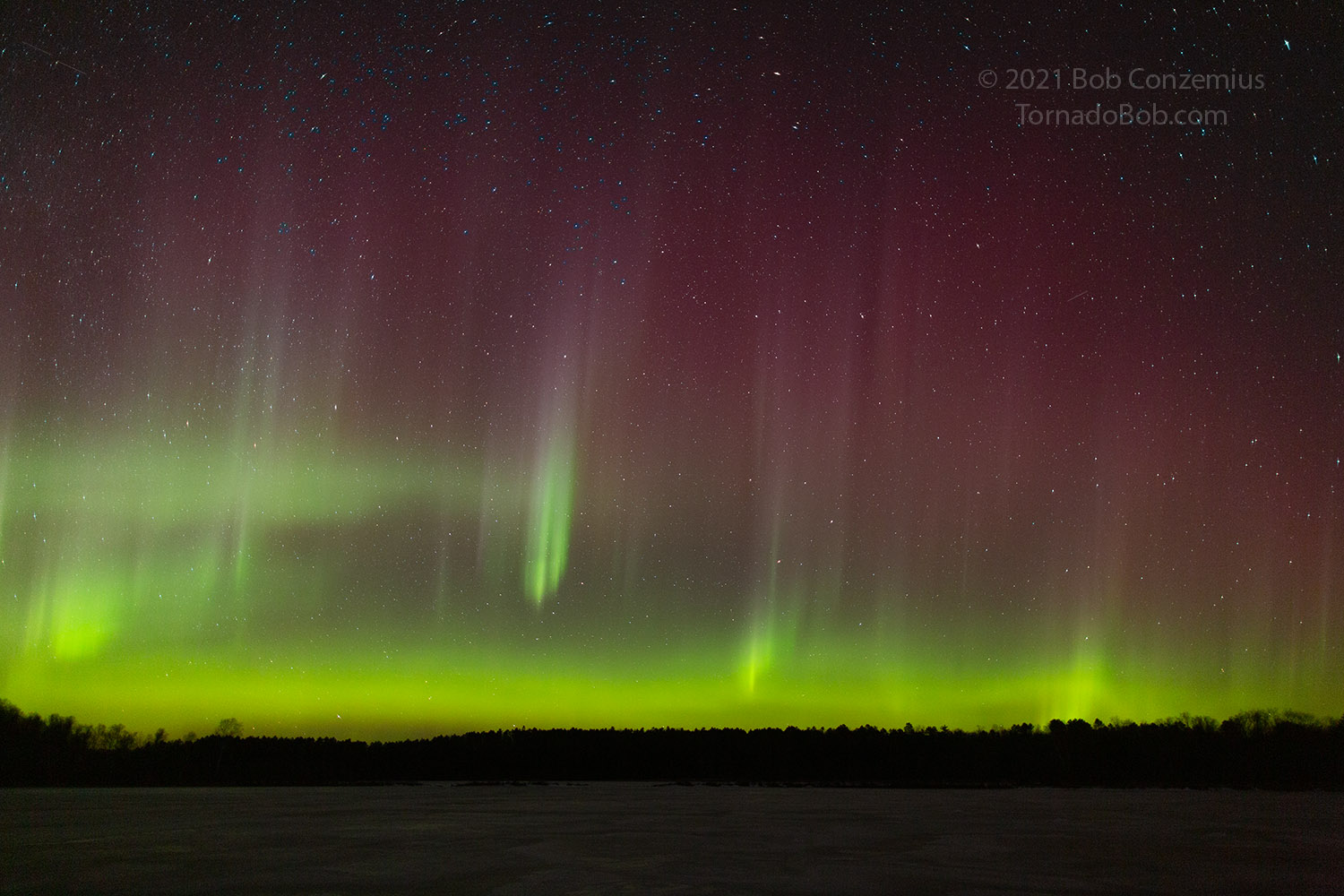 |
| Some nice structures with multiple colors. |
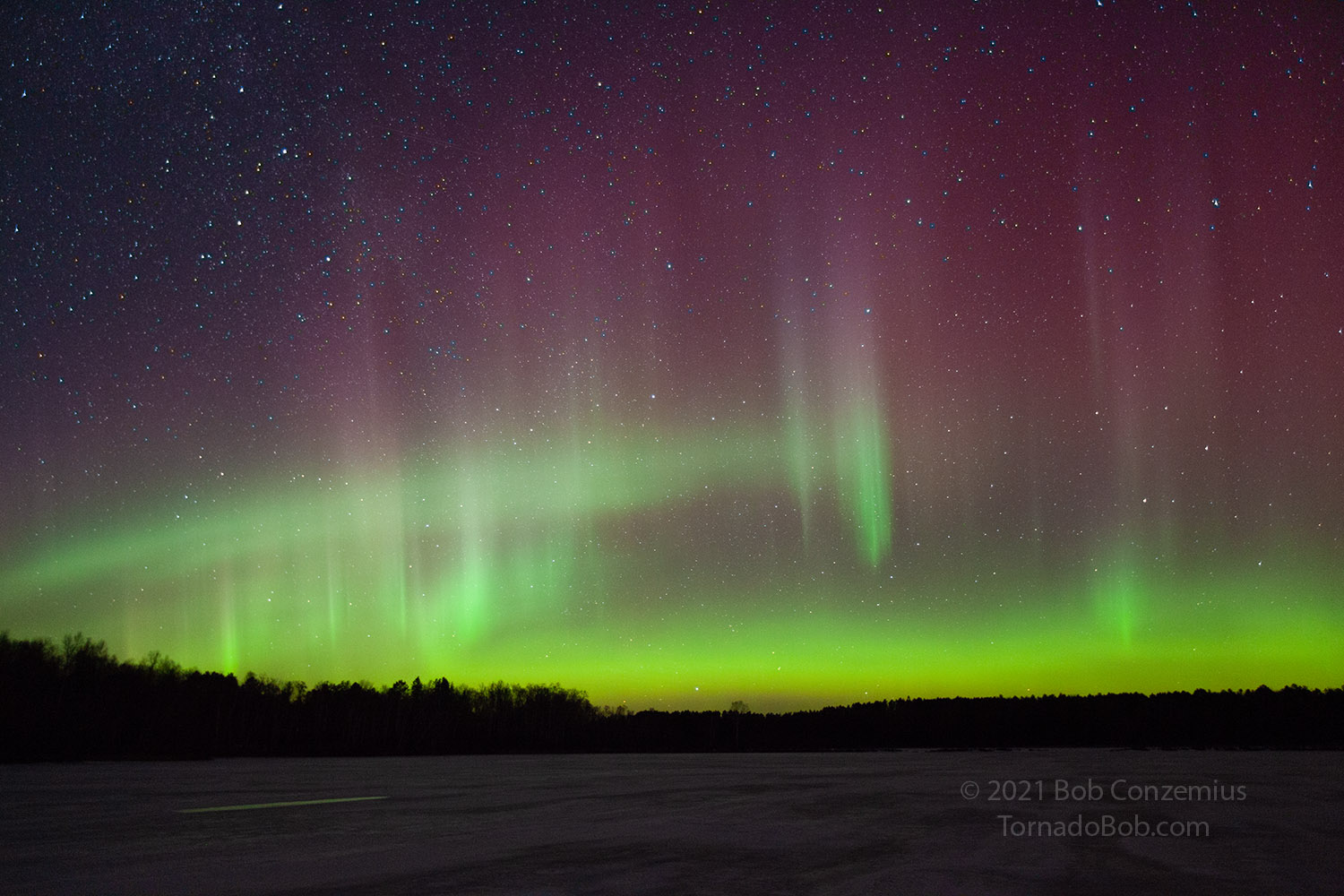 |
| The auroras got fairly high in the sky. This is my best image from the first substorm. |
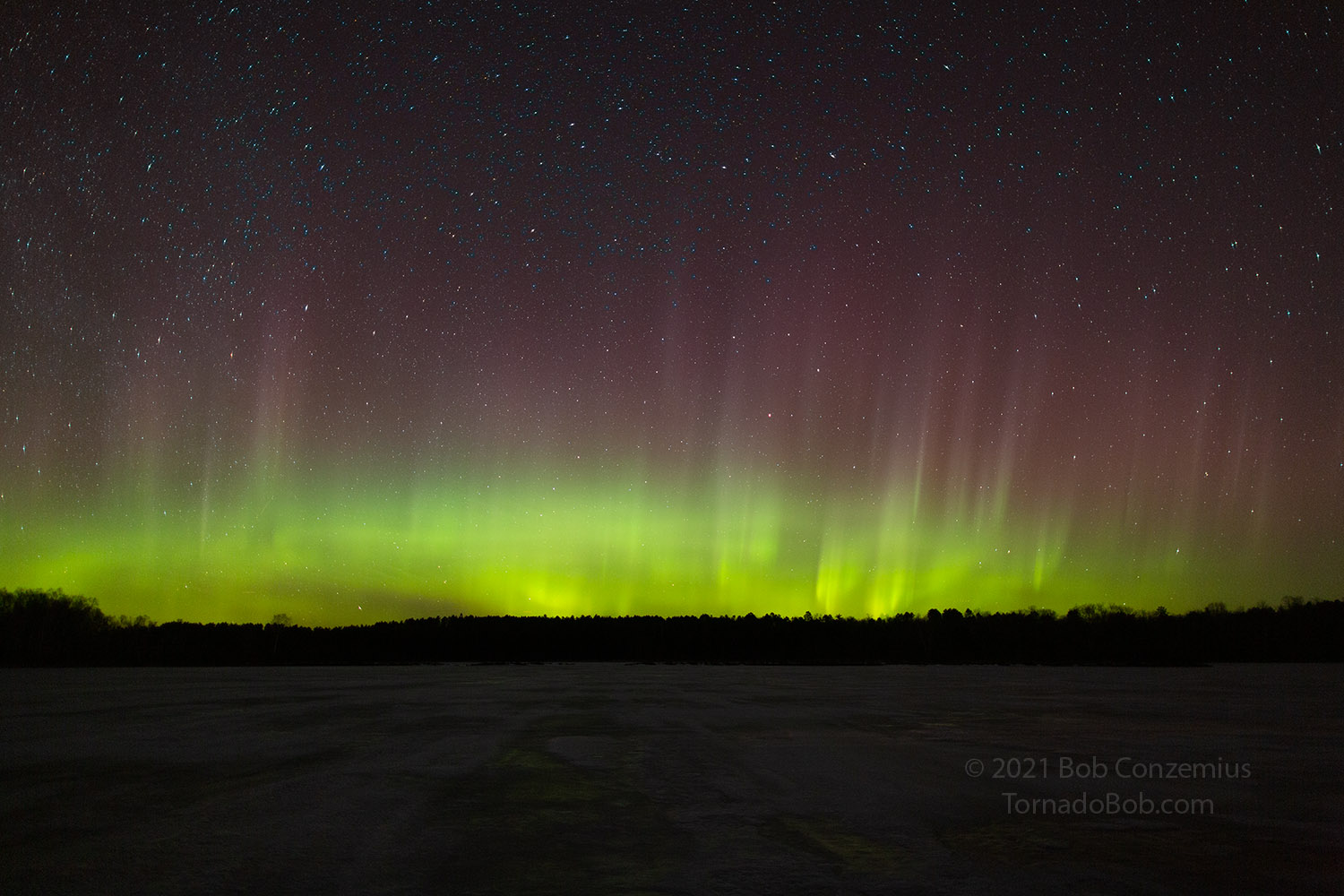 |
| A second flare-up of auroral structure quickly followed. |
After about hour and fifteen minutes of excitement, things started to calm down a bit, so I decided to resume my drive to the original destination. It was still relatively early, and being a Saturday night, I didn't need to get up early in the morning. I set up in my usual spot, set one camera in a time lapse mode, and ran back to get the other camera to take stills.
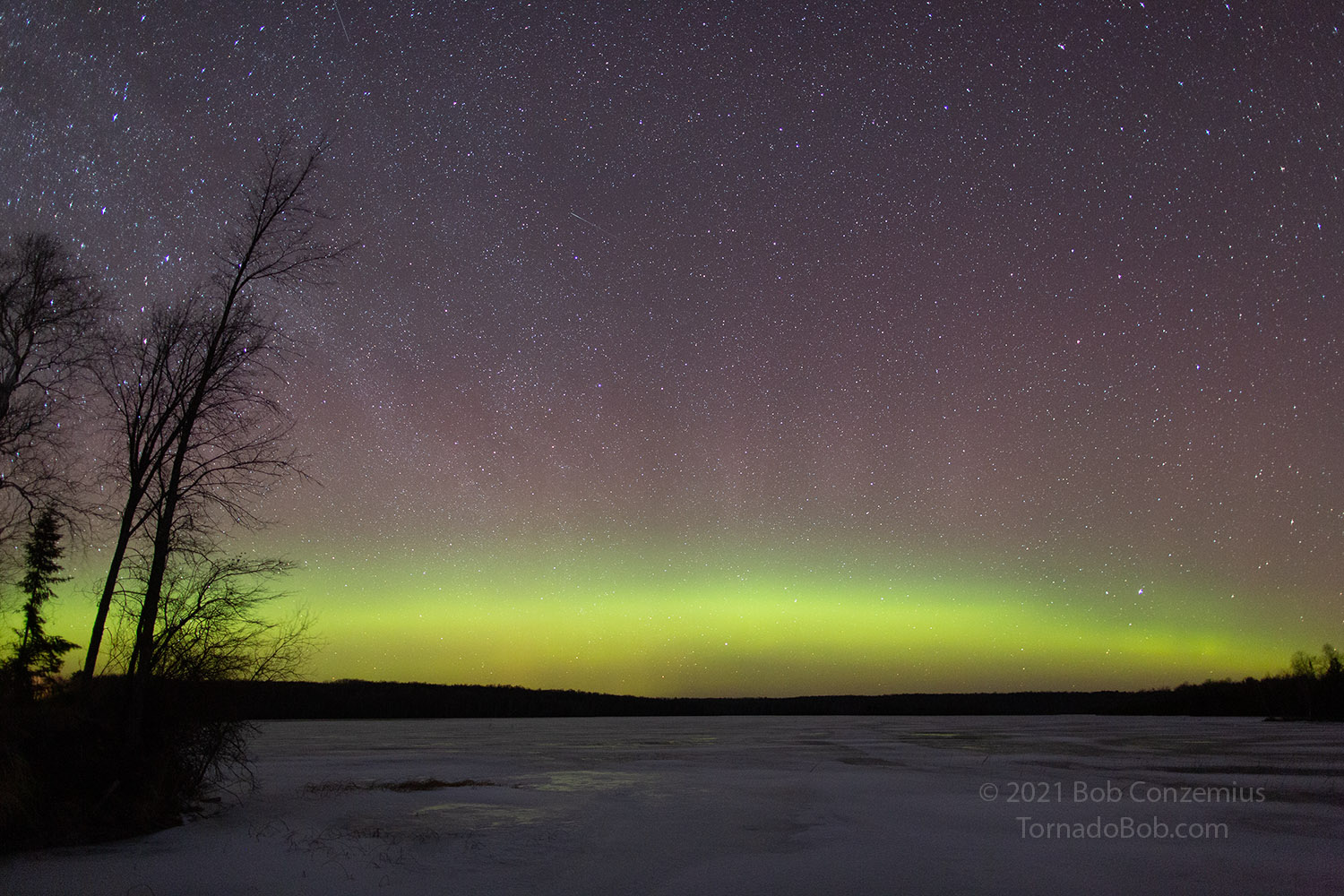 |
| The auroral arc reestablishes itself. |
I had gotten tired of shooting at 24mm and wider, so I took out my 24-70mm zoom lens and began to experiment while the other camera shot a time lapse. Bz really wasn't strongly negative, so the auroras really weren't coming very far south towards Minnesota. I could zoom in a bit and compose shots with auroras filling more of the image. The structures were nice tonight, so there would be a fair bit to make the image interesting if I zoomed in more.
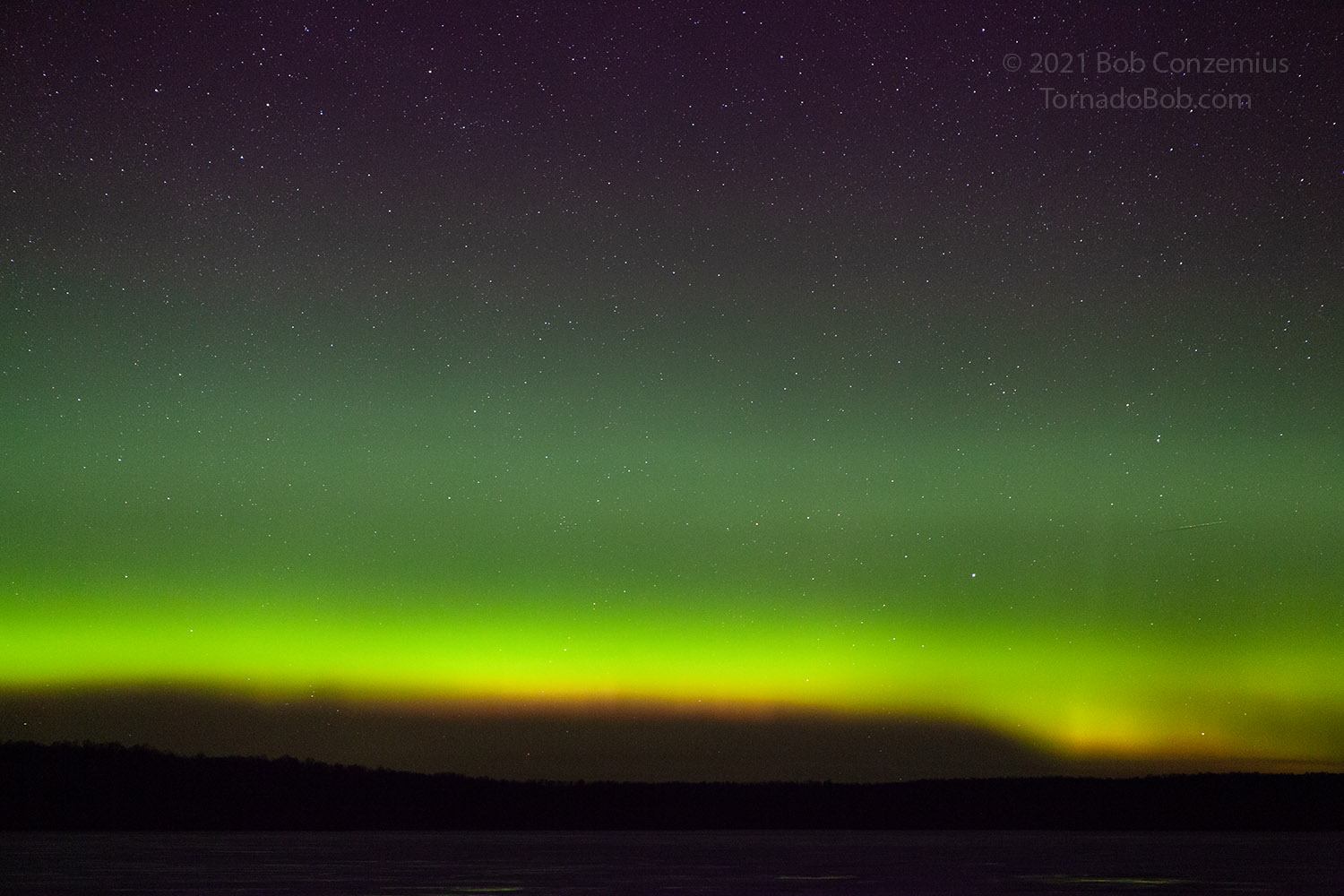 |
| First zoom image-- zoomed in on the auroral arc. 70mm shot. |
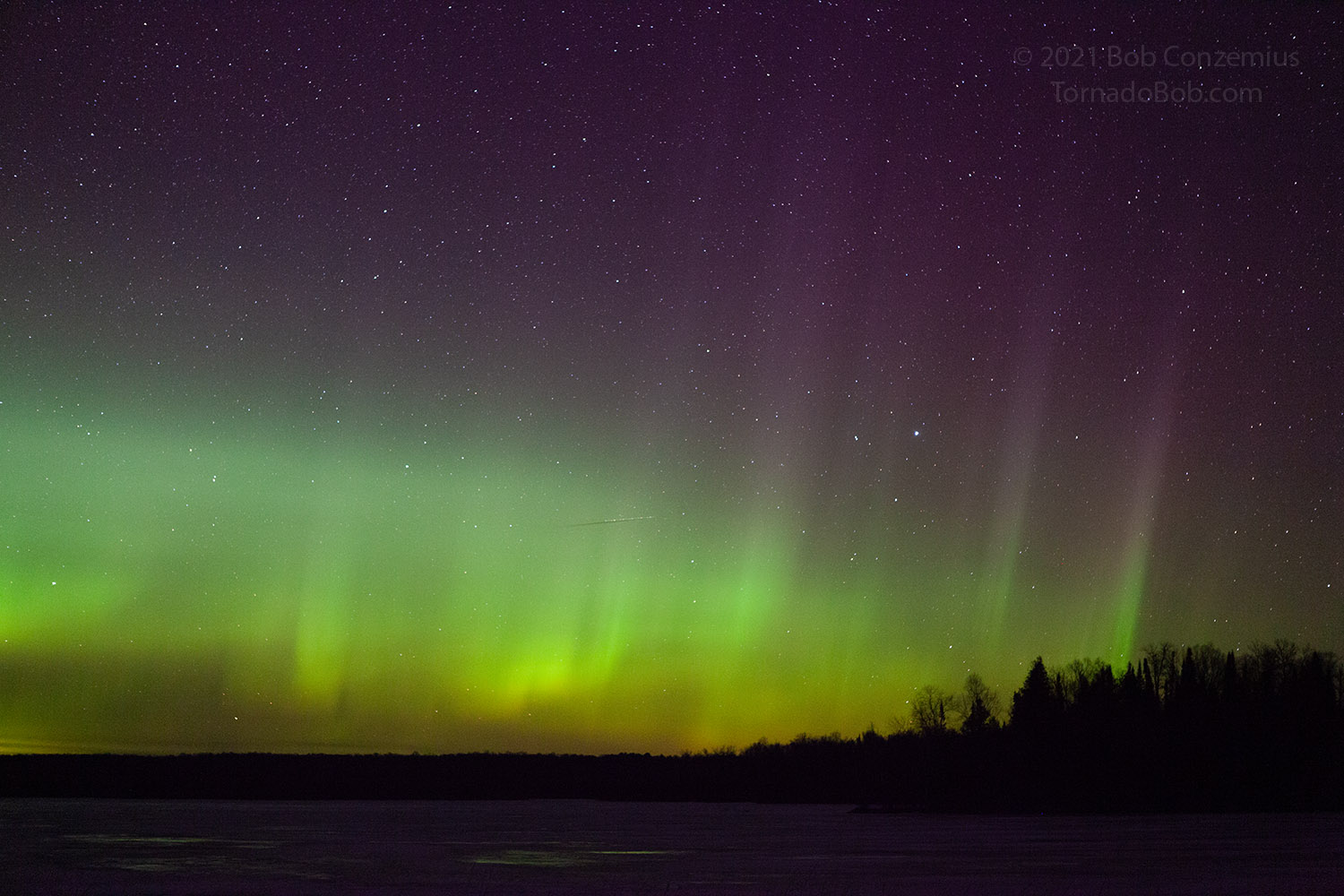 |
| Two shots later, looking northeast. 54mm. |
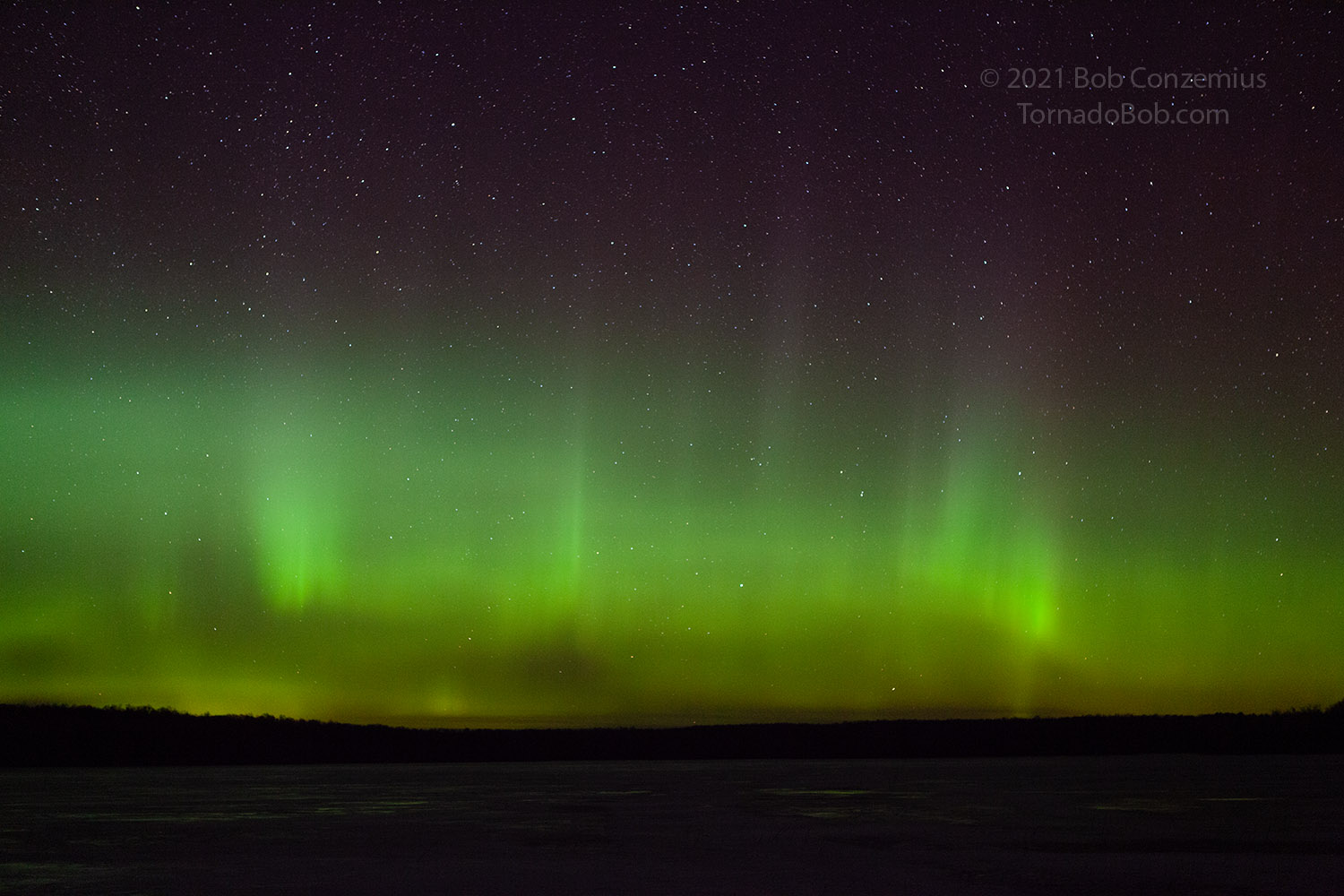 |
| Three shots later, looking north. 46mm. |
One problem with this particular lens was that the infinity focus point varies as a function of zoom, so when I change the zoom, I have to take a few shots to refocus my images. This is a bit of a pain when the auroras are actively moving. I decided to settle in at my lastest setting, which happened to be 46mm. In the future, maybe I can get a 50mm prime lens.
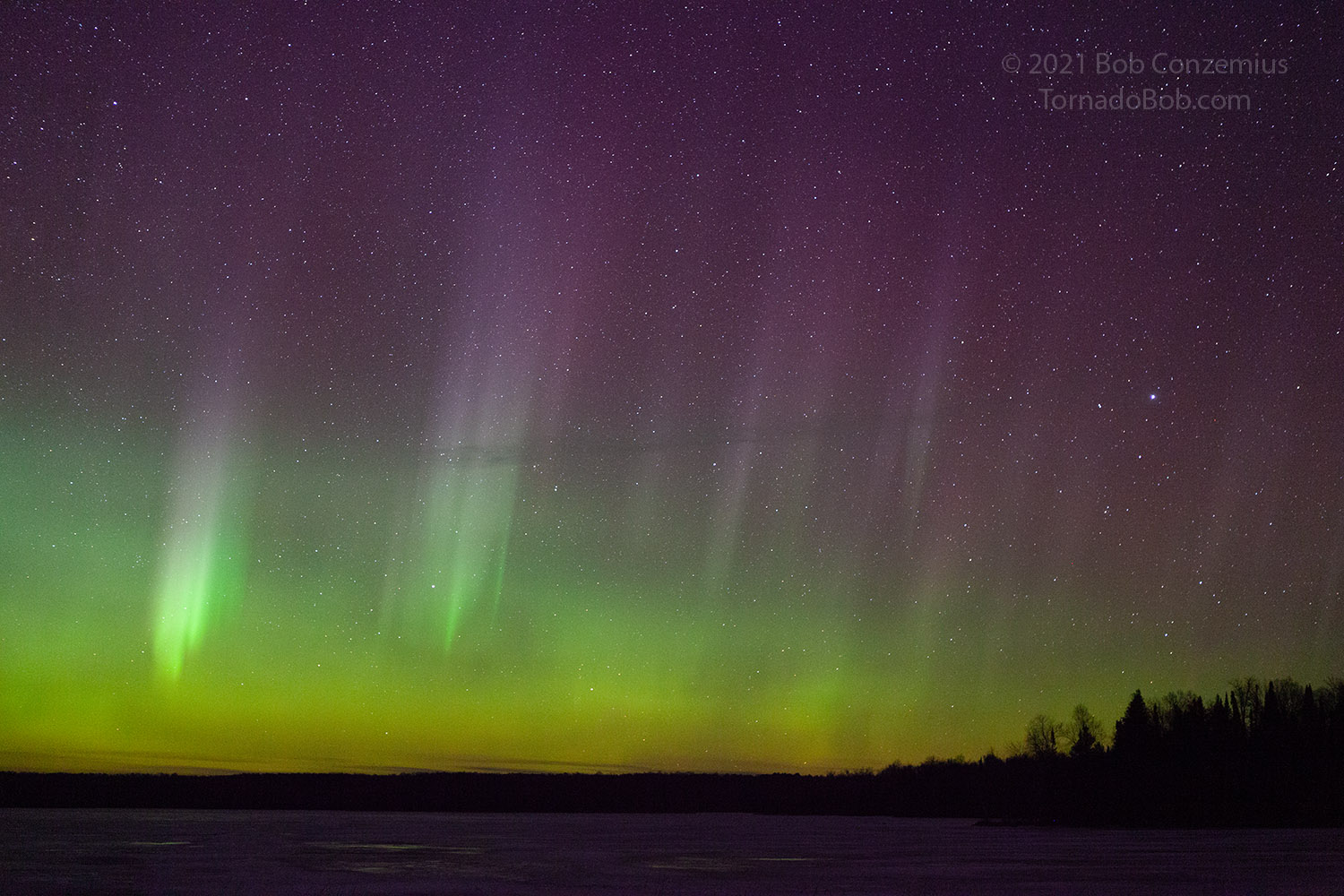 |
| The structures that were present earlier in the evening reappear. 46mm. |
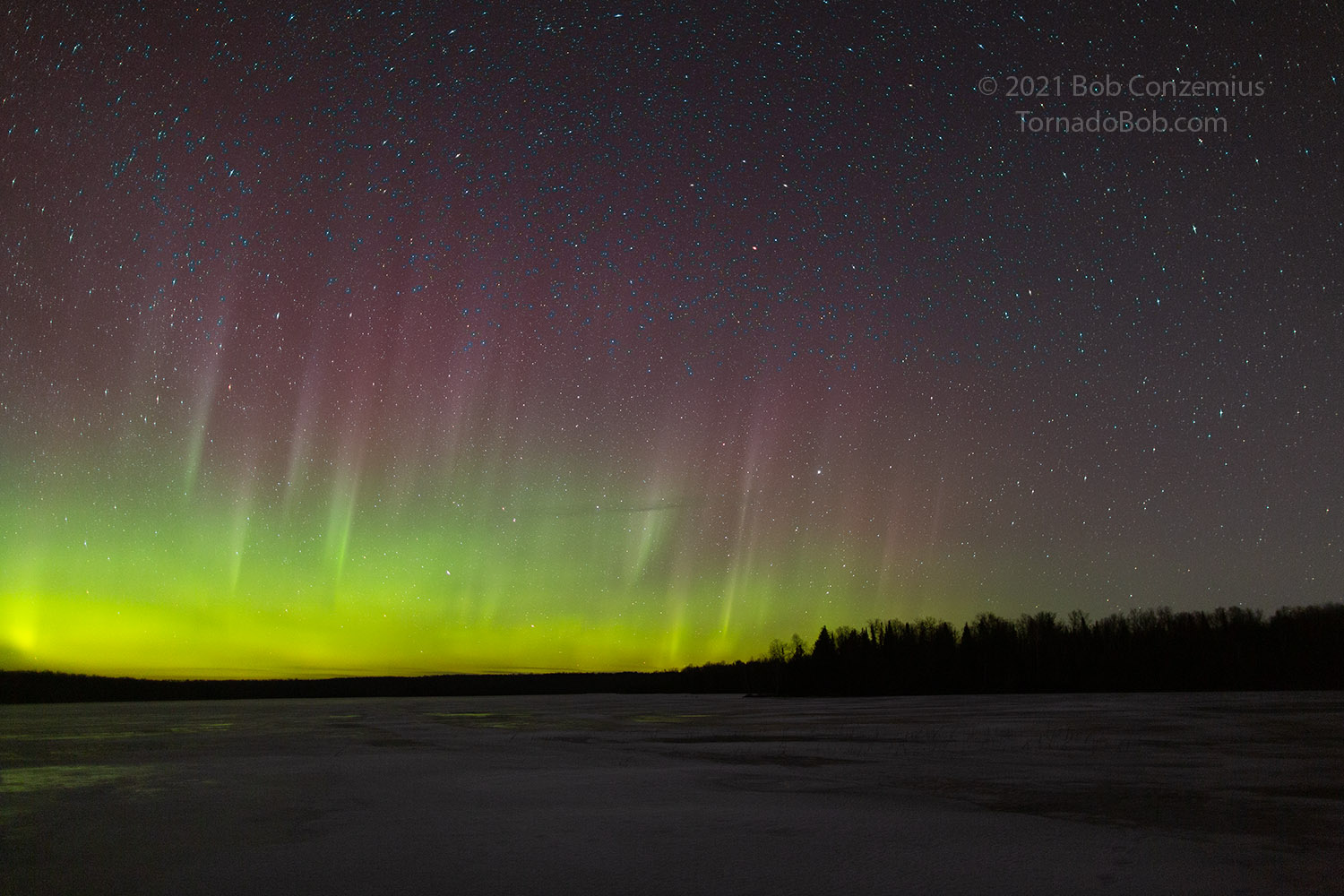 |
| A sample shot with the time lapse camera. |
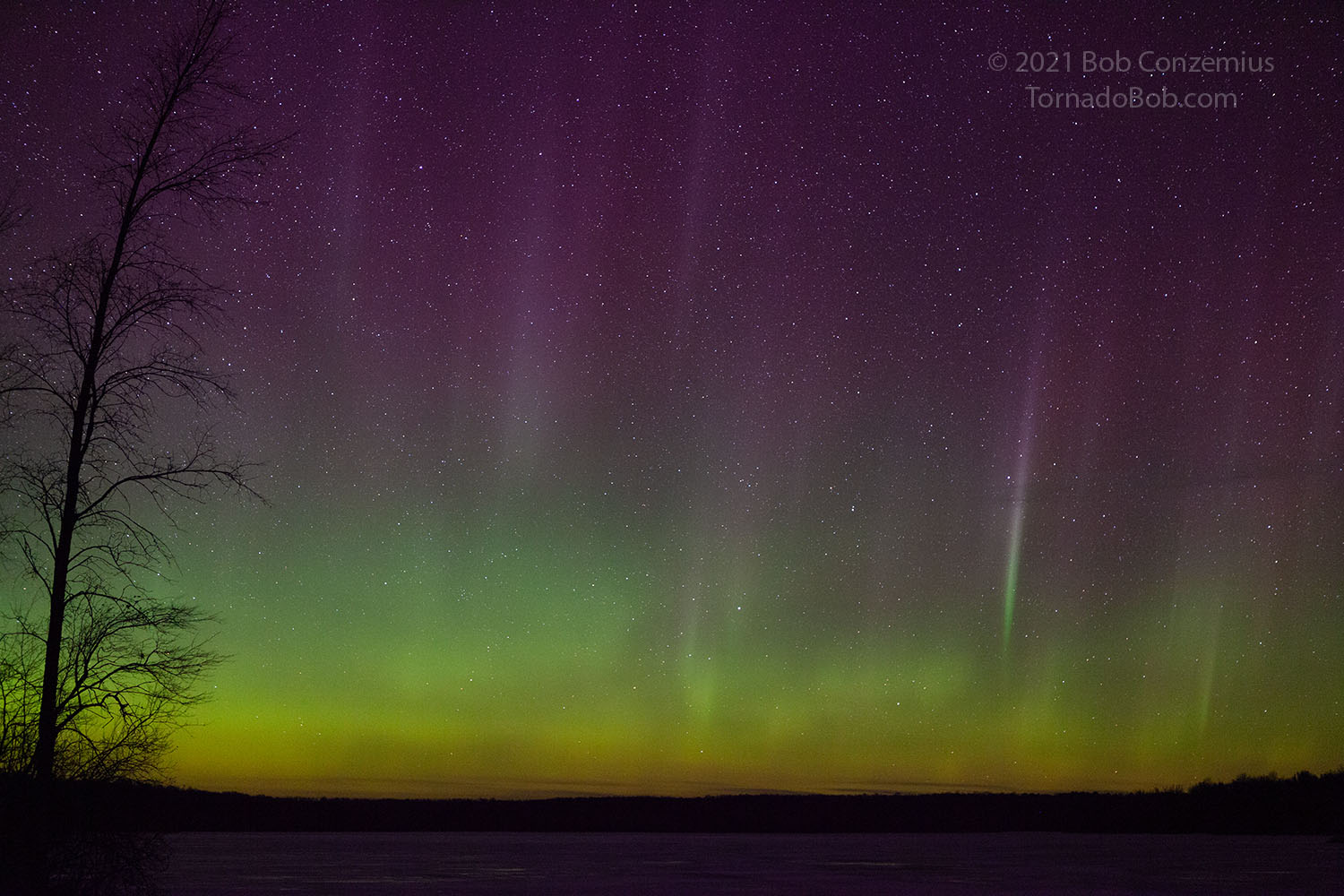 |
| A different 46mm composition at the location where my time lapse camera was shooting. |
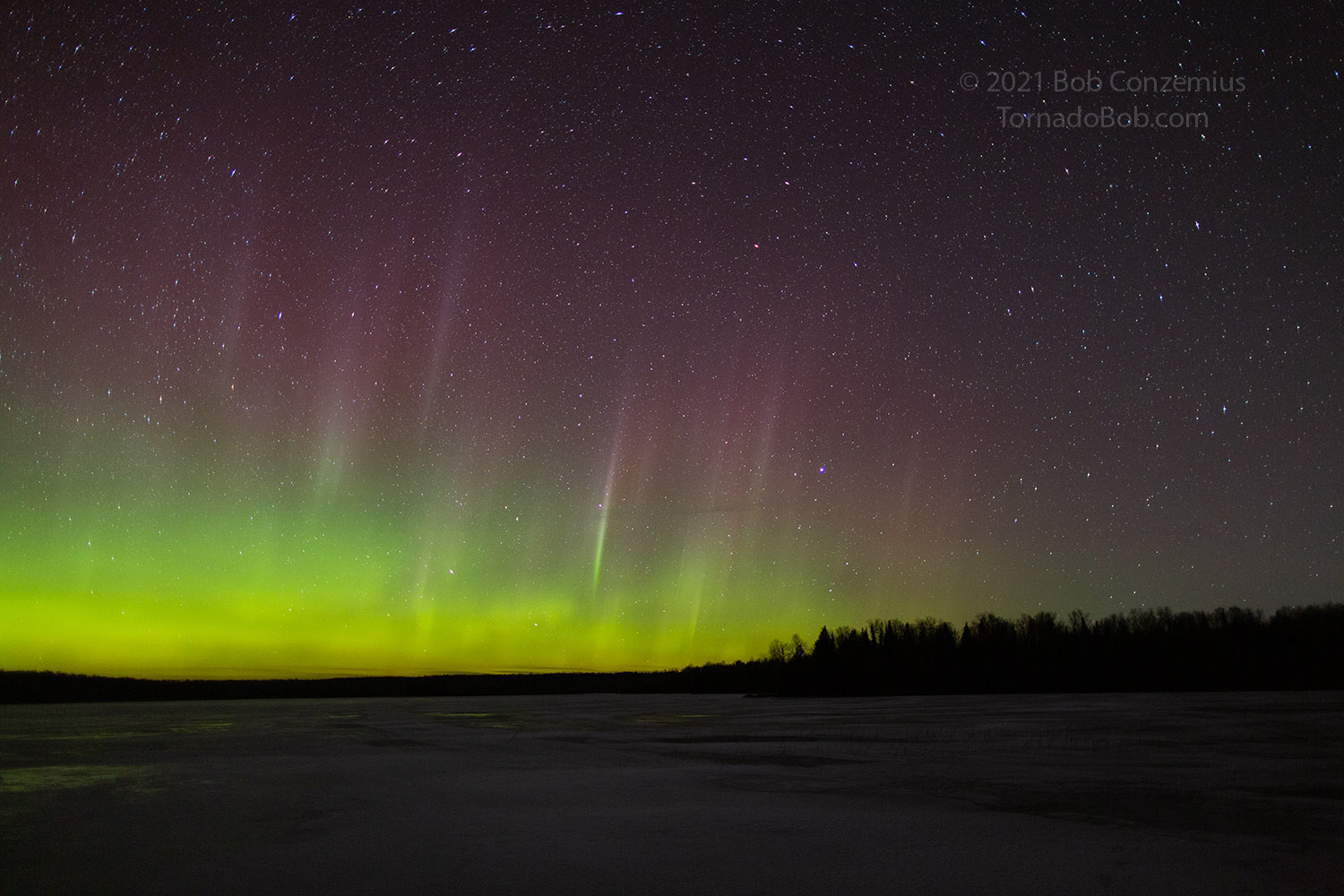 |
| Same time as above but with the other camera. 24mm. |
Things were settling down again, and I was planning when I would stop shooting and go home, but then I looked to the west and saw STEVE (strong thermal emission velocity ehnancement)-- a feature related to the auroras but apparently not strictly an auroral feature itself. It is not associated with precipitating electrons like regular auroras are. Instead, the atmosphere gets heated and produces its own emissions. The color is distinctly different-- sort of a purple (mauve?)-tinted gray. It is also often accompanied by a green, picket fence feature (not sure if these picket fence structures have precipitating electrons or not). When I've been able to closely observe them, or when I am looking at time lapses of them, STEVE and the picket fence mark the southern edge of the dimmest auroras, thus, the "picket fence" terminology is quite apt. After watching these for a little while, i packed up and headed for home.
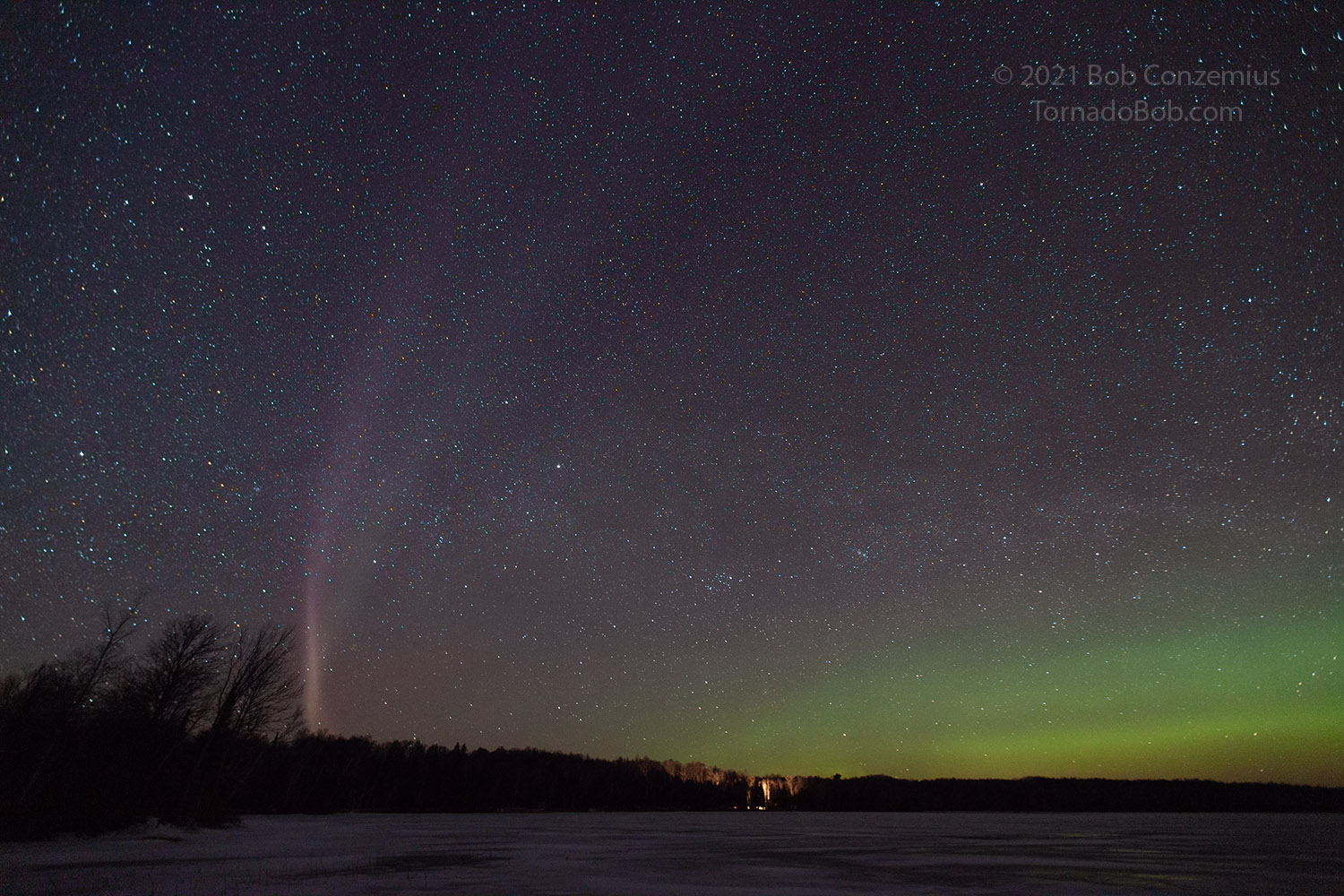 |
| Looking west at STEVE. |
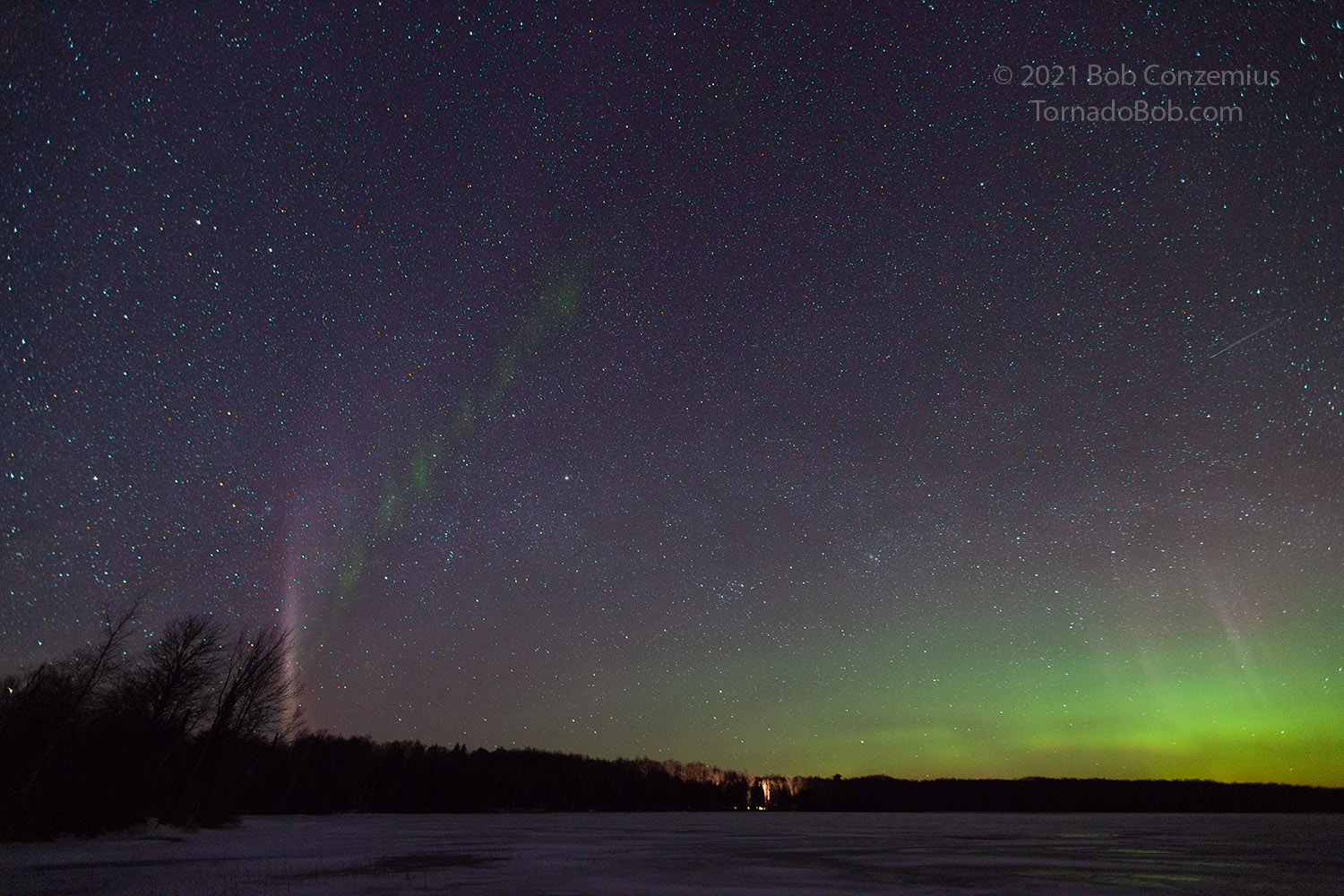 |
| STEVE with the picket fence auroras. |
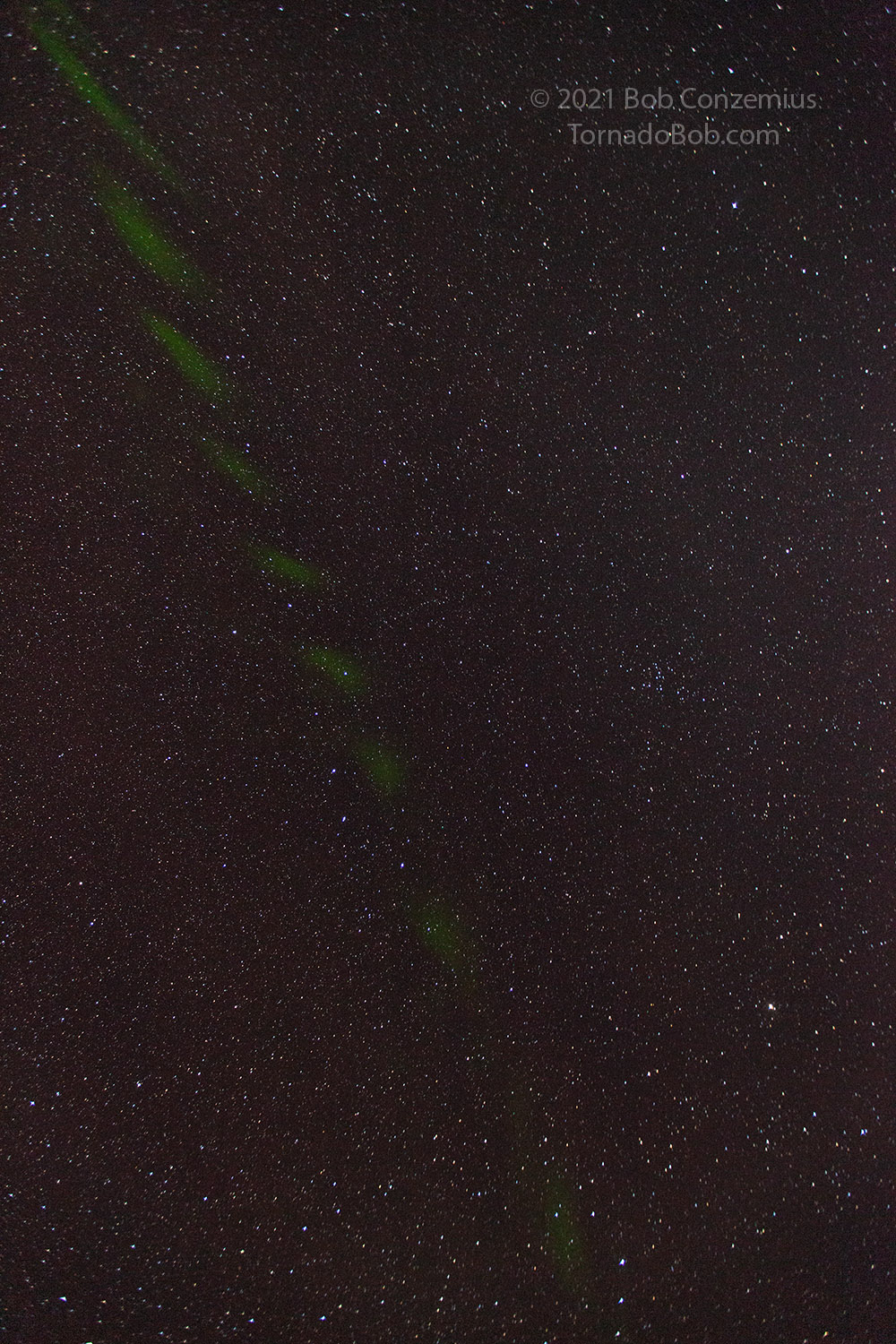 |
| Looking straight up at the picket fence auroras. |
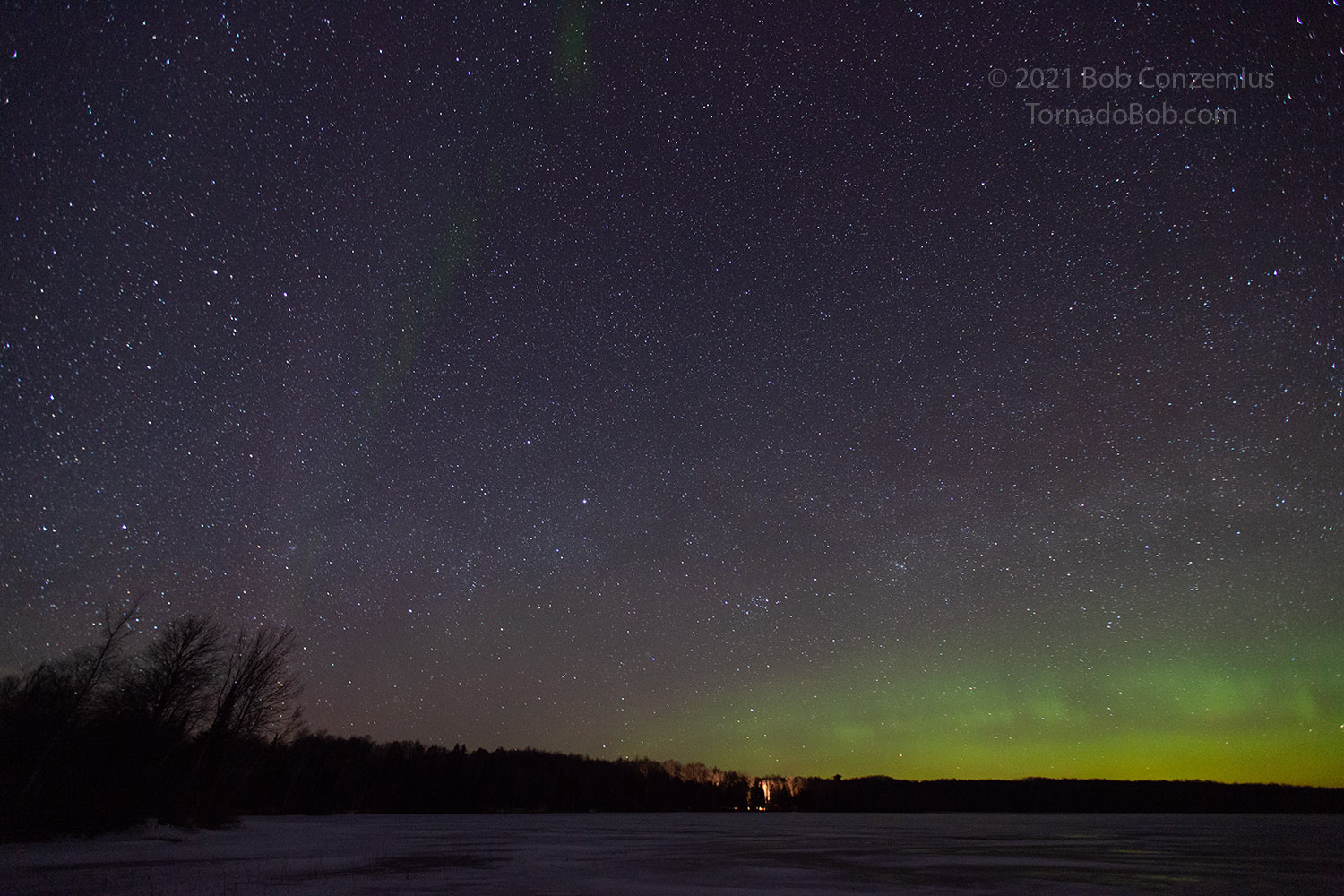 |
| Final image, taken about the same time as the Suomi NPP satellite image below. |
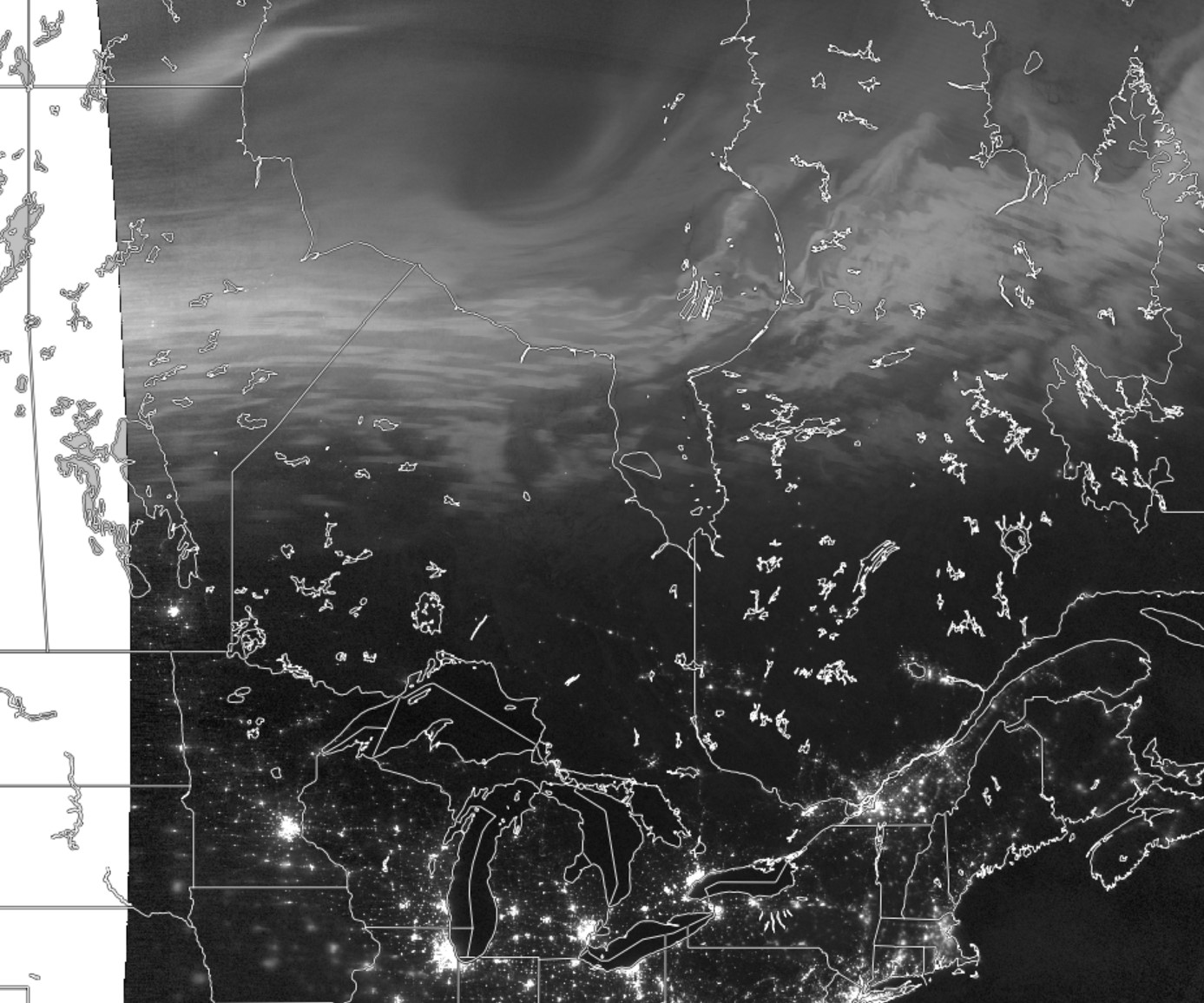 |
| Image from the Suomi NPP satellite taken about the same time as the image above. |
Back to Auroras | Home


















